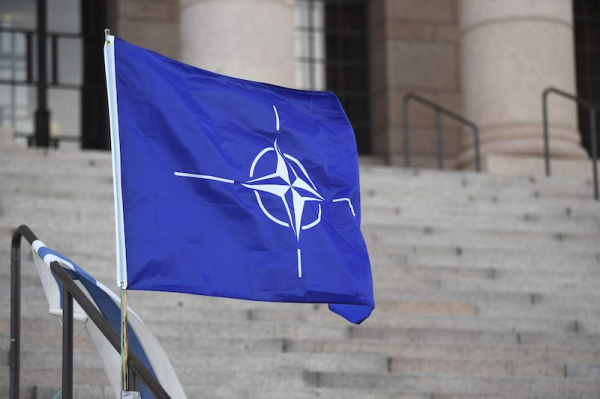
NATO flag in front of the Parliament house in Helsinki. LEHTIKUVA
- Previous Article Faster than expected decline in birth rates shakes Finland in 2023
- Next Article Majority of sushi in Helsinki capital region meets high quality standards
A new study has shed light on the dramatic shift in the Finnish Twitter discourse regarding NATO following Russia’s invasion of Ukraine. The research, conducted jointly by Aalto University and the University of Helsinki, reveals a significant change in the attitudes of Finnish Twitter users, particularly those identified as left-leaning, towards NATO.
Before Russia’s large-scale invasion of Ukraine in February 2022, Finnish public opinion on NATO membership was divided,
with only 20-30% in favor, predominantly along left-right political lines. However, the study shows a notable depolarization in citizen opinion post-invasion, as observed in Twitter conversations. Depolarization here refers to the convergence of opposing societal views.
Yan Xia, a doctoral researcher at Aalto University’s Department of Computer Science, explains, “Before the invasion, we identified three distinct groups in our study: NATO supporters, left-leaning NATO opponents, and conspiracy theory-influenced NATO opponents. We used trends in retweets to classify these ideological groups.”
Post-invasion, there was a noteworthy shift. “The left-leaning NATO-opposing group broke out of their retweeting bubble, aligning closer to NATO supporters, irrespective of previous left-right divisions. However, the conspiracy theorists’ group remained insulated, largely confined to their retweeting bubble,” Xia adds.
The convergence between left-leaning NATO opponents and NATO supporters was marked by a unified condemnation of Russia’s invasion and shared democratic norms. The researchers suggest that external threats can break down societal divisions, but echo chambers based on conspiracy theories and disinformation are resistant to even severe external threats.
Tuomas Ylä-Anttila, Assistant Professor of Political Science at the University of Helsinki, notes the durability of these echo chambers. “Their persistence is likely due to the communication network structure: people in disinformation bubbles interact minimally with others, predominantly encountering views that reinforce their existing beliefs.”
Ylä-Anttila further explains the phenomenon of confirmation bias among individuals with strong, unconventional opinions. “They are more likely to cling to their beliefs and easily overlook viewpoints that contradict their own.”
This polarization is not exclusive to NATO discussions. “Understanding these disinformation bubbles is crucial for democratic decision-making. They are a part of political reality in Finland, and entities benefiting from them, like Kremlin’s propaganda machinery, are likely fueling them actively,” Ylä-Anttila asserts.
The research team, comprising network scientists from Aalto University and political researchers from the University of Helsinki, used network theoretical methods to measure structural polarization in discussions and automatically identify different bubbles and structures in social media conversations.
“Unlike survey studies, this approach lets us precisely track the evolution of discussions over time, even retrospectively, which was crucial for this study to be timed around Russia’s invasion,” says Mikko Kivelä, Assistant Professor of Computer Science at Aalto University.
The study, recently published in the European Physical Journal Data Science, highlights the evolving dynamics of political discourse in social media, providing insights into public opinion shifts in times of geopolitical crises.
HT
- Previous Article Faster than expected decline in birth rates shakes Finland in 2023
- Next Article Majority of sushi in Helsinki capital region meets high quality standards
Source: www.helsinkitimes.fi
